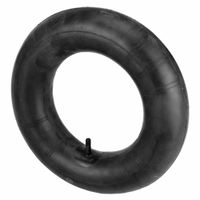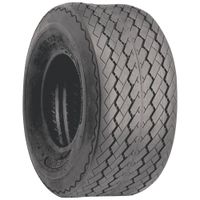Call +(254) 703 030 000 / 751 483 999 / 721 704 777
- Home
- Fleet Vehicle Maintenance
- Tire Brake Maintenance
- Tire Wheel Replacement
Tire & Wheel Replacement
Trailer and equipment tires replace old or worn tires on trailers, sporting vehicles, tractors, and lawnmowers. Inner tubes fit tires that require an inflatable tube inside the tire casing. Read Less
Frequently Asked Questions
When should I replace trailer tires?
Trailer tires should be replaced based on several factors to ensure safety and performance. Here are the key considerations:
1. **Age**: Trailer tires typically have a lifespan of 3 to 6 years, regardless of tread wear. Check the DOT code on the tire sidewall to determine the manufacturing date. Replace tires that are over 6 years old, even if they appear to be in good condition.
2. **Tread Wear**: Unlike car tires, trailer tires often wear out due to age rather than tread wear. However, if the tread depth is below 2/32 of an inch, it's time to replace them. Uneven tread wear can also indicate alignment or suspension issues that need addressing.
3. **Cracks and Bulges**: Inspect tires for cracks in the sidewall or tread, which can indicate dry rot. Bulges or blisters on the tire surface suggest internal damage and necessitate immediate replacement.
4. **Usage and Load**: Frequent use, heavy loads, and long-distance travel can accelerate tire wear. If you regularly tow heavy loads or travel long distances, consider replacing tires more frequently.
5. **Storage Conditions**: Tires exposed to harsh weather conditions, such as extreme heat, cold, or direct sunlight, may degrade faster. Store trailers in a cool, dry place and use tire covers to protect them from UV rays.
6. **Vibration and Handling Issues**: If you experience unusual vibrations or handling problems while towing, inspect the tires for damage or imbalance. Persistent issues may require tire replacement.
7. **Regular Inspections**: Conduct regular visual inspections and check tire pressure before each trip. Properly inflated tires last longer and perform better.
By considering these factors, you can determine the optimal time to replace your trailer tires, ensuring safety and reliability on the road.
How do I know if my lawnmower tires need replacing?
To determine if your lawnmower tires need replacing, check for the following signs:
1. **Tread Wear**: Inspect the tread on the tires. If the tread is worn down or bald, it reduces traction, making it difficult to maneuver the mower, especially on slopes or wet grass.
2. **Cracks and Dry Rot**: Look for cracks or dry rot on the tire surface or sidewalls. Exposure to sunlight and weather can cause the rubber to deteriorate, leading to potential blowouts.
3. **Punctures and Damage**: Examine the tires for any punctures, cuts, or other visible damage. Small punctures might be repairable, but larger ones or multiple damages may require replacement.
4. **Air Pressure Issues**: If the tires frequently lose air or cannot maintain proper pressure, it could indicate a leak or damage that necessitates replacement.
5. **Uneven Wear**: Check for uneven wear patterns, which can result from improper inflation or alignment issues. Uneven wear can affect the mower's performance and handling.
6. **Bulges or Blisters**: Inspect for any bulges or blisters on the tire surface, which can indicate internal damage and a risk of tire failure.
7. **Age of Tires**: Consider the age of the tires. Even if they appear in good condition, tires older than five years may need replacing due to material degradation over time.
8. **Performance Issues**: If you notice the mower is not performing as well, such as difficulty steering or reduced speed, it might be due to tire issues.
Regularly inspecting your lawnmower tires and addressing any of these signs promptly can ensure optimal performance and safety.
What are the signs of worn-out tractor tires?
Signs of worn-out tractor tires include:
1. **Tread Wear**: The most obvious sign is the tread depth. If the tread is worn down to the wear bars or is significantly shallower than the original depth, the tire is worn out.
2. **Cracks and Dry Rot**: Look for cracks on the sidewalls or between the treads. Dry rot occurs when the rubber becomes brittle and starts cracking, often due to age or exposure to harsh weather conditions.
3. **Bulges and Blisters**: Any bulges or blisters on the tire surface indicate structural damage, often due to impact or internal air pressure issues, and can lead to sudden tire failure.
4. **Uneven Wear**: Uneven tread wear can be a sign of misalignment, improper inflation, or suspension issues. It can lead to reduced traction and handling problems.
5. **Punctures and Cuts**: Frequent punctures or visible cuts in the tire can compromise its integrity and lead to air leaks or blowouts.
6. **Vibration**: Excessive vibration while driving can indicate tire imbalance or internal damage, which may not be visible externally.
7. **Loss of Air Pressure**: If a tire frequently loses air pressure, it may have a slow leak or be damaged beyond repair.
8. **Age**: Even if the tread looks fine, tires older than 6-10 years may need replacement due to material degradation over time.
9. **Reduced Traction**: Noticeable loss of traction, especially in wet or muddy conditions, can indicate that the tire's grip is compromised.
10. **Noise**: Unusual noises while driving can suggest tire issues, such as uneven wear or internal damage.
Regular inspection and maintenance are crucial to ensure safety and optimal performance.
How often should I check the tire pressure on sporting vehicles?
Check the tire pressure on sporting vehicles at least once a month. Additionally, inspect the pressure before and after any long trips or high-speed driving sessions. For vehicles used in competitive sports or track events, check the tire pressure before each event and adjust as necessary based on track conditions and temperature changes. Regular checks ensure optimal performance, safety, and tire longevity.
Can I use tubeless tires on equipment that originally had inner tubes?
Yes, you can use tubeless tires on equipment that originally had inner tubes, but there are several considerations to ensure a successful conversion. First, check if the rims are compatible with tubeless tires. Tubeless-ready rims have a specific design that allows for an airtight seal between the tire and the rim. If your rims are not tubeless-ready, you may need to use a tubeless conversion kit, which typically includes rim tape, tubeless valves, and sealant.
Next, ensure that the tires you choose are tubeless-compatible. Tubeless tires have a different bead design that helps maintain an airtight seal. When installing, clean the rim thoroughly and apply the tubeless rim tape to cover the spoke holes, ensuring no air leaks. Insert the tubeless valve and secure it tightly.
Mount the tire onto the rim, ensuring the bead is seated properly. Use a compressor or a high-volume pump to inflate the tire quickly, which helps the bead to seat against the rim. Once seated, add sealant through the valve or by unseating a portion of the tire bead. Rotate and shake the wheel to distribute the sealant evenly, which will seal any small leaks.
Finally, check for air leaks by listening for hissing sounds or using soapy water to identify bubbles. Adjust the tire pressure to the recommended level for optimal performance.
While converting to tubeless can offer benefits like reduced punctures and improved ride quality, it requires careful installation and maintenance. If unsure, consult a professional to ensure safety and performance.
What is the best way to store trailer tires when not in use?
The best way to store trailer tires when not in use involves several key steps to ensure they remain in good condition:
1. **Clean Thoroughly**: Before storage, clean the tires with water and mild soap to remove dirt, grime, and brake dust. Ensure they are completely dry to prevent moisture-related damage.
2. **Remove from Trailer**: If possible, remove the tires from the trailer to reduce stress and prevent flat spots from developing.
3. **Store in a Cool, Dry Place**: Keep the tires in a climate-controlled environment, away from direct sunlight, heat sources, and ozone-producing equipment like electric motors. A basement or garage is ideal.
4. **Elevate Off the Ground**: Store tires on a pallet or shelf to keep them off the ground, which helps prevent moisture absorption and reduces the risk of damage from chemicals or pests.
5. **Maintain Upright Position**: Store tires vertically rather than stacking them horizontally. This helps maintain their shape and prevents sidewall stress.
6. **Use Tire Covers or Bags**: Cover the tires with breathable tire covers or store them in tire storage bags to protect them from dust, dirt, and UV exposure.
7. **Avoid Chemical Exposure**: Keep tires away from solvents, fuels, and other chemicals that can degrade rubber.
8. **Check Pressure**: If storing tires on rims, maintain the recommended air pressure to help them retain their shape.
9. **Rotate Periodically**: If possible, rotate the tires every few months to prevent flat spots and ensure even distribution of any pressure.
10. **Inspect Regularly**: Periodically check the tires for signs of damage, such as cracks or bulges, to address any issues before they worsen.
By following these steps, you can extend the lifespan of your trailer tires and ensure they are ready for use when needed.
How do I choose the right size tire for my equipment?
To choose the right size tire for your equipment, follow these steps:
1. **Identify Equipment Needs**: Determine the type of equipment and its specific requirements, such as load capacity, terrain, and usage conditions.
2. **Consult the Manual**: Refer to the equipment's owner manual for manufacturer-recommended tire sizes and specifications. This ensures compatibility and optimal performance.
3. **Understand Tire Markings**: Learn to read tire size markings, which typically include width, aspect ratio, and diameter (e.g., 205/55R16). This helps in selecting the correct size.
4. **Consider Load Capacity**: Ensure the tire can support the equipment's weight, including any additional load. Check the tire's load index, which indicates its maximum load capacity.
5. **Evaluate Terrain and Conditions**: Choose tires suited for the operating environment. For rough or uneven terrain, opt for larger, more robust tires. For smooth surfaces, standard sizes may suffice.
6. **Check Tread Pattern**: Select a tread pattern that matches the terrain. Aggressive treads are ideal for off-road conditions, while smoother treads work well on paved surfaces.
7. **Assess Tire Type**: Decide between bias-ply and radial tires. Bias-ply tires offer durability and are suitable for rough terrains, while radial tires provide better traction and fuel efficiency on smoother surfaces.
8. **Consult a Professional**: If unsure, seek advice from a tire specialist or dealer. They can provide recommendations based on your equipment and usage needs.
9. **Consider Future Needs**: Anticipate any changes in equipment use that might require different tire specifications.
10. **Budget Considerations**: Balance quality and cost. Investing in high-quality tires can lead to better performance and longevity, reducing long-term costs.
By following these steps, you can select the right tire size that ensures safety, efficiency, and optimal performance for your equipment.

